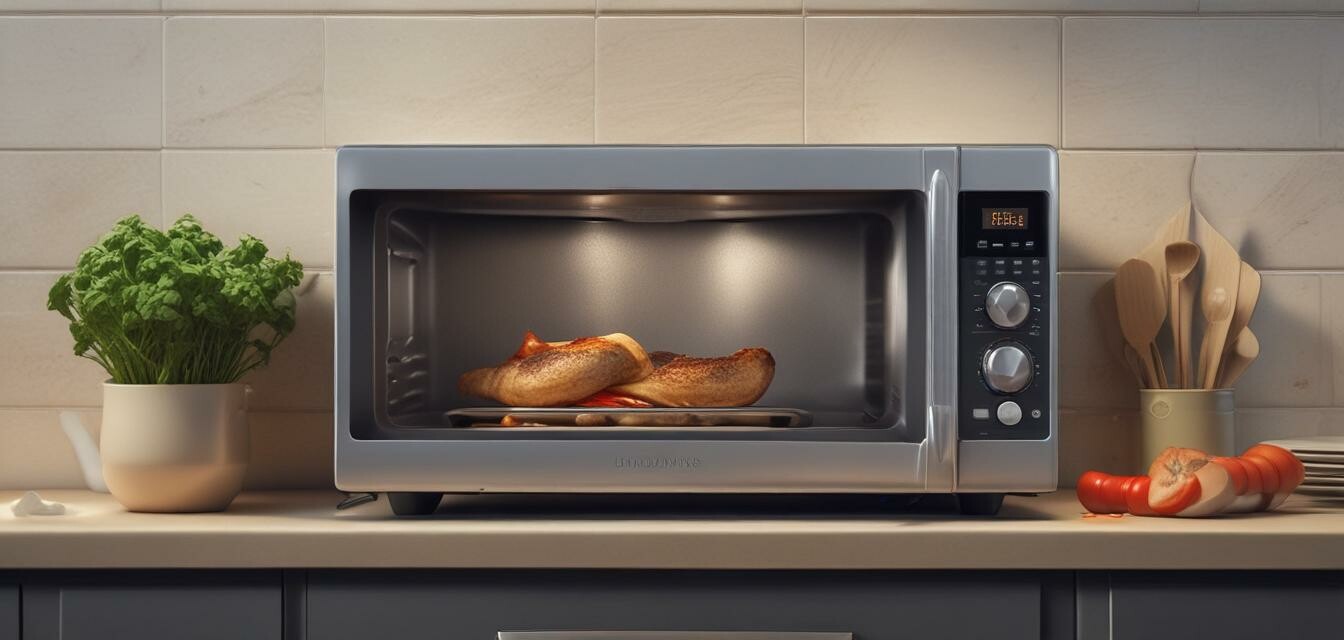
The Transformation of Microwave Technology
Key Takeaways
- Smart microwaves are integrating IoT technology for enhanced features.
- Voice control and app integration are becoming standard functionalities.
- Energy efficiency is a growing trend in modern microwaves.
- Microwaves are evolving from simple heating appliances to versatile kitchen hubs.
- Future trends indicate a rise in multifunctional appliances that combine several functionalities.
In recent years, microwave technology has undergone significant transformation, evolving from mere food reheating devices to sophisticated appliances that offer a range of smart functionalities. This transformation not only enhances convenience but also optimizes cooking efficiency. Let’s explore how smart technology is changing the landscape of microwave ovens and their functionalities.
How Smart Technology is Changing Microwave Ovens
1. Integration of Internet of Things (IoT)
Smart microwaves are now compatible with IoT technology, allowing them to connect to home networks and mobile devices. This integration offers features like:
- Remote control from smartphones
- Recipe suggestions based on available ingredients
- Scheduled cooking options
2. Voice-Controlled Operations
Voice assistants like Amazon Alexa or Google Assistant are becoming commonplace in kitchen appliances. This means you can:
- Set cooking times with voice commands
- Adjust power settings without manual inputs
- Receive notifications about cooking completion
3. Enhanced Energy Efficiency
Modern microwaves are being designed to consume less energy while maximizing output. This results in both environmental benefits and cost savings on energy bills:
- Smart sensors that adjust cooking time based on food weight
- Eco modes that reduce power usage
4. Multifunctionality
Today's microwaves are no longer single-use. They are combining functionalities to replace traditional appliances, including:
- Convection cooking
- Grilling
- Air frying capabilities
This multifunctionality makes them a valuable addition to any kitchen, catering to different cooking styles and preferences.
5. User-Friendly Touchscreen Interfaces
Advanced touchscreens now enable a more intuitive experience, simplifying the cooking process:
- Visual prompts for various cooking functions
- Easy navigation through preset cooking modes
- Color-coded options for user friendliness
Comparison of Traditional vs. Smart Microwaves
| Feature | Traditional Microwave | Smart Microwave |
|---|---|---|
| Control Methods | Manual buttons and dials | Touchscreen and app-controlled |
| Energy Efficiency | Standard energy use | Optimized for lower consumption |
| Cooking Modes | Heating and defrosting | Multi-functional cooking modes |
| Connectivity | No connectivity | IoT and voice control enabled |
Future Trends in Microwave Technology
As technology continues to evolve, the future of microwaves looks promising:
- Increased integration with smart home systems enhancing automation.
- Use of artificial intelligence to suggest cooking times and temperatures.
- Continued advancements in energy-saving technologies.
Tips for Choosing a Smart Microwave
- Consider your cooking needs and choose a model with appropriate features.
- Look for energy efficiency ratings to save on bills.
- Ensure compatibility with your smart home system for seamless integration.
- Explore user reviews to find reliable brands and models.
- Check for warranty and customer support before purchase.
Conclusion
The evolution of microwave technology has transformed how we cook our meals. With the integration of smart technology, today's microwaves are not just tools for reheating food but are becoming essential, multifunctional appliances that can streamline cooking and create a more efficient kitchen experience. As we look to the future, remaining aware of the latest trends in appliance technology will ensure that your kitchen stays equipped for efficiency and convenience.
Pros
- Adds convenience to cooking tasks
- Energy-efficient options available
- Integration with smart home systems
- Multi-functional cooking capabilities
- User-friendly interfaces
Cons
- Higher cost compared to traditional models
- Dependence on technology may lead to issues in power outages
- Can be complicated to operate for some users
For more insights into the latest trends in kitchen appliances, check out our articles on kitchen appliance trends and discover how technology is reshaping cooking. If you're interested in purchasing smart appliances, explore our Bluetooth-enabled appliances and smart ovens for innovative cooking solutions.